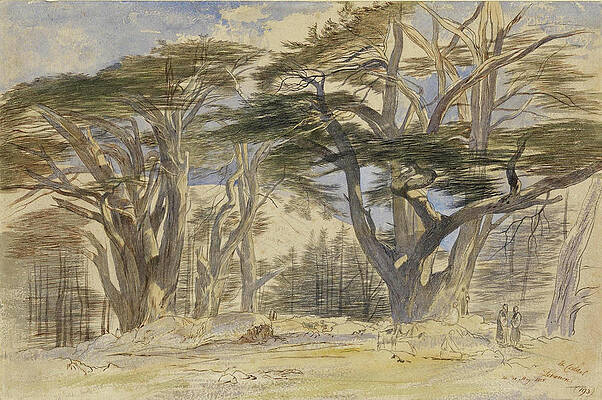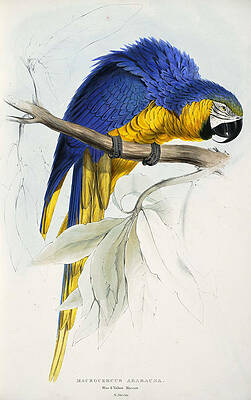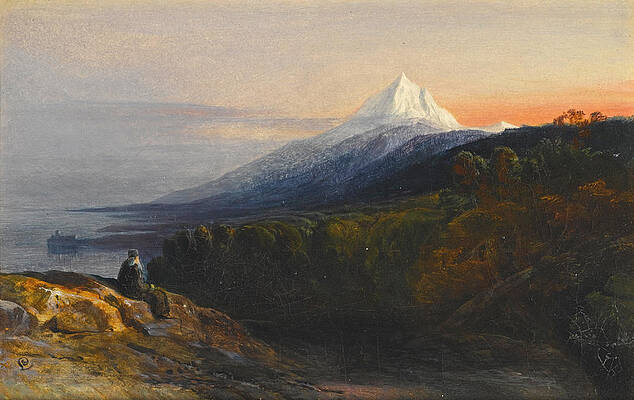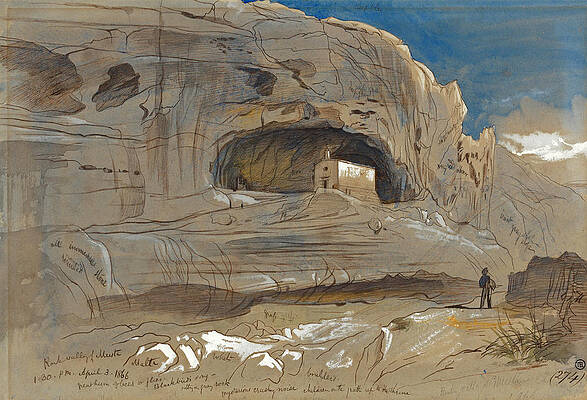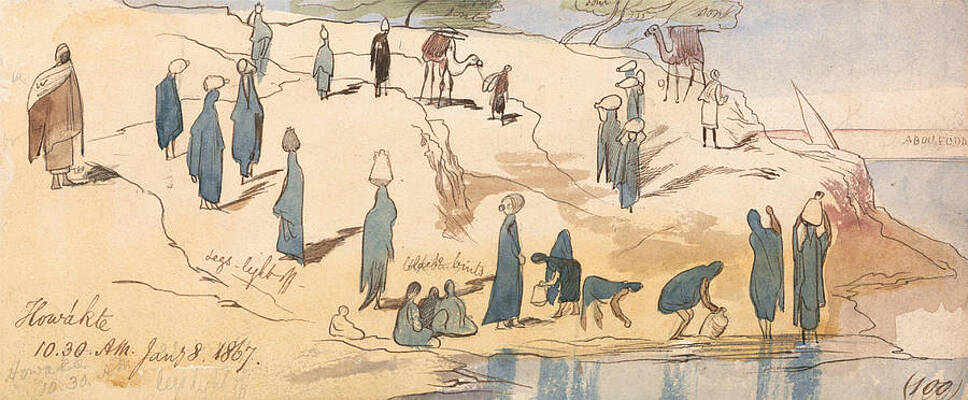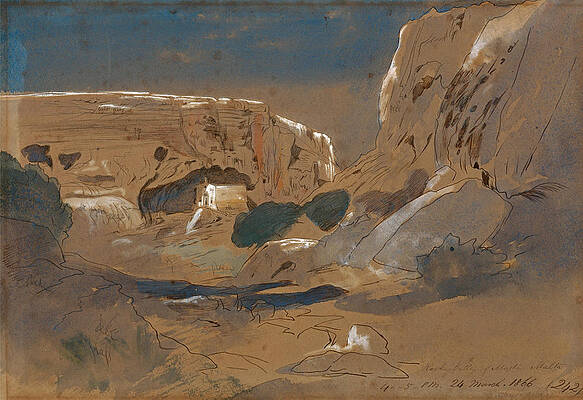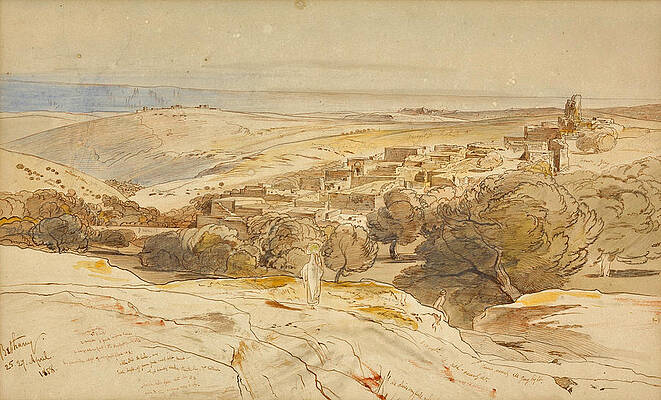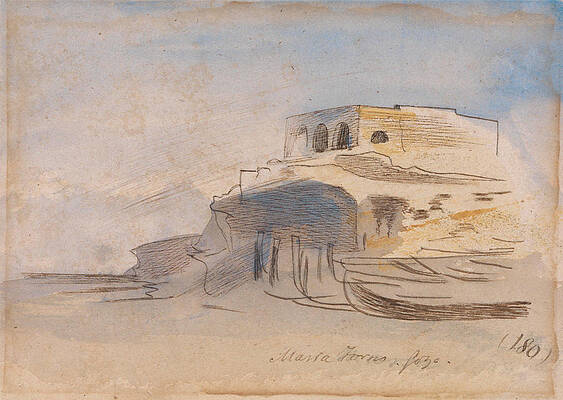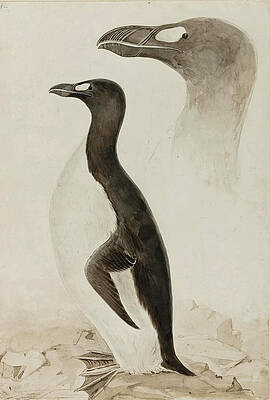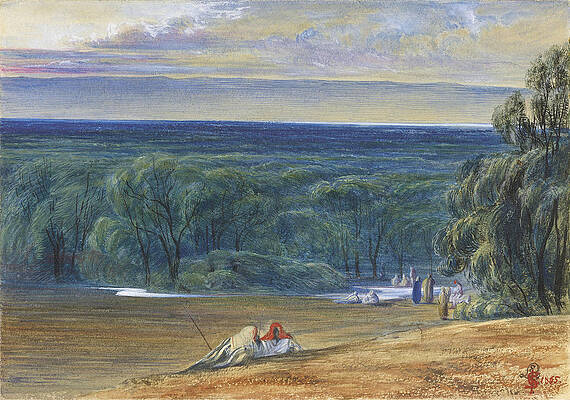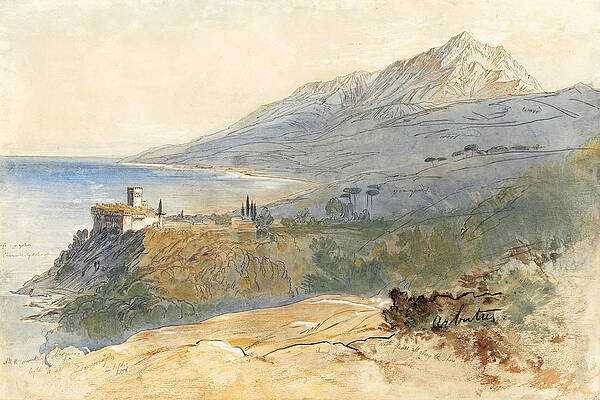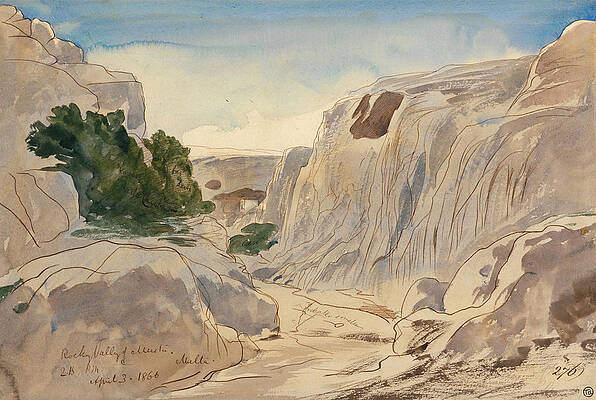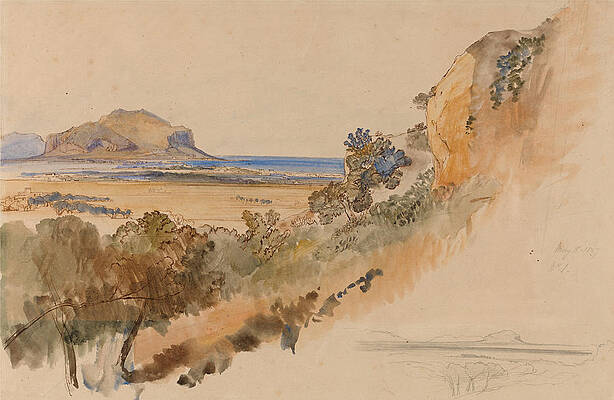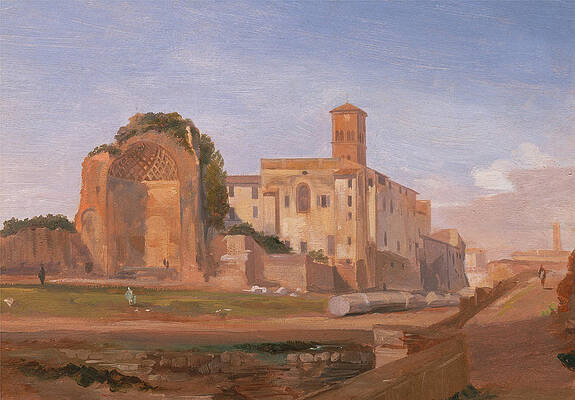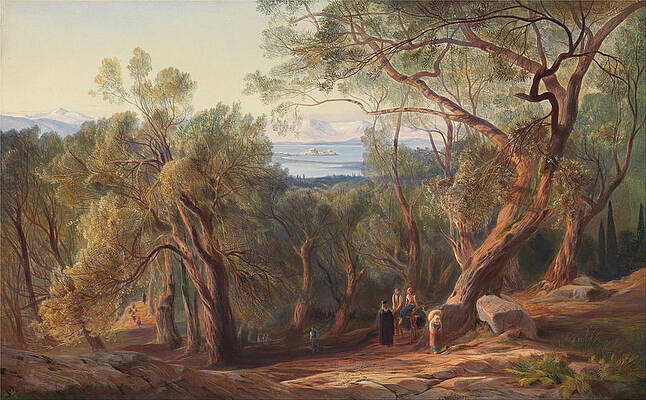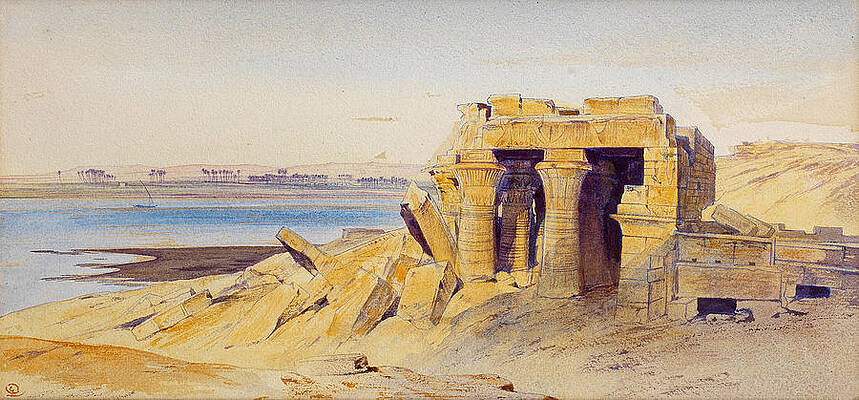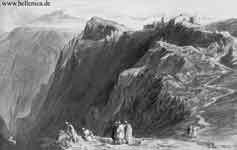Edward Lear
Illustrations, Drawings, Paintings
Blue and yellow Macaw. Ara ararauna
Jerusalem from the Mount of Olives
A View of Mount Athos and the Pantokrator Monastery Greece
Syra. Greece
Taormina. Sicily
A View of the Pine Woods Above Cannes
A View of the Harbour at Cannes
Rocky Valley of Mosta. Malta. 1.30 p.m.3 April 1866
Eagle Owl. Bubo maximus
Ara Macao
Howatke
Monastir, Albania
Mount Athos and the Monastery of Stavronikita
Zagori. Greece
Plains of Bengal from above Siligoree
The Marble Rocks. Nerbudda Jubbolpore
Rocky Valley of Mosta. Malta
Corfu
The Acropolis, Athens
Kangchenjunga from Darjeeling
A distant view of Mount Athos
Near Gau el Kebir
Great Cinereous Owl
Gozo near Malta
River Pass Between Barren Rock Cliffs
Psitteuteles Versicolor
The Pineta. Ravenna
Ioannina. Greece
Benares
Tollygunge, Calcutta
Sliema
Phyle. Attica Greece
Zante. Greece
Roman Catholic Cemetery at Palaiopolis, Kaligoni, Santa Maura
An Extensive View of Bethany
Wied Zurrik, Malta
Massa Forno, Gozo
Greek Woodcutter 13 June 1856
Auribeau
Below Rabat, Malta
Belbeis
Garf Hassai, Malta
The School of Homer, Ithaca, Greece
Parga, Greece
Toco Toucan. Ramphastos toco
Great Auk. Pinguinus impennis
Jericho
The Monastery of Stavronikita, Mount Athos
Monte Soratte near Rome, Italy
Parnassus, Greece
Rocky Valley of Mosta, Malta, 2-15 p.m., April 3, 1866
Sabooa
Damascus
View near Palermo
Temple of Venus and Roma, Rome
Silsilis
Mahabalipooram
Corfu from Santa Decca
Orange grove, Corfu
Kom Ombo, Egypt
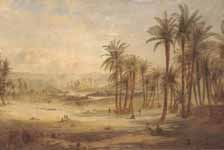
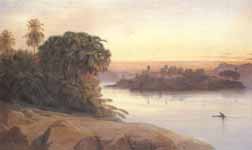
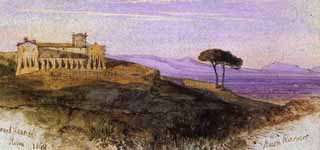
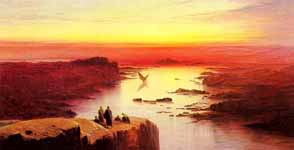
A View Of The Nile Above AswanBlue And Yellow Macaw


Corfu And The Albanian Mountains
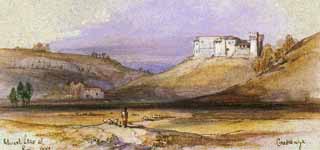
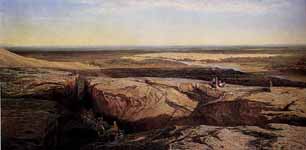
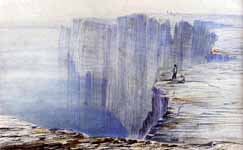
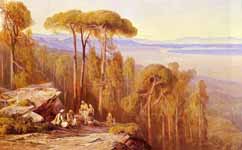
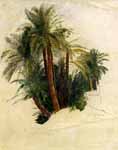

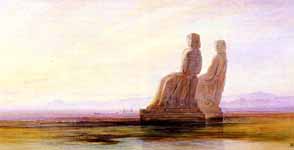
The Plain Of Thebes With Two Colossi

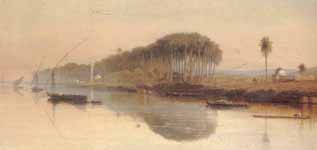

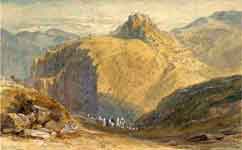


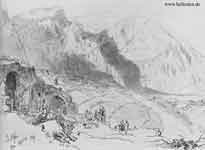
Edward Lear (12 or 13 May 1812[1][2] – 29 January 1888) was an English artist, illustrator, musician, author and poet, and is known now mostly for his literary nonsense in poetry and prose and especially his limericks, a form he popularised. His principal areas of work as an artist were threefold: as a draughtsman employed to illustrate birds and animals; making coloured drawings during his journeys, which he reworked later, sometimes as plates for his travel books; as a (minor) illustrator of Alfred Tennyson's poems. As an author, he is known principally for his popular nonsense collections of poems, songs, short stories, botanical drawings, recipes, and alphabets. He also composed and published twelve musical settings of Tennyson's poetry.
Biography
Early years
Lear by Wilhelm Marstrand
Lear was born into a middle-class family at Holloway, North London, the penultimate of twenty-one children (and youngest to survive) of Ann Clark Skerrett and Jeremiah Lear.[3] He was raised by his eldest sister, also named Ann, 21 years his senior. Owing to the family's limited finances, Lear and his sister were required to leave the family home and live together when he was aged four. Ann doted on Edward and continued to act as a mother for him until her death, when he was almost 50 years of age.[4]
Lear suffered from lifelong health afflictions. From the age of six he suffered frequent grand mal epileptic seizures, and bronchitis, asthma, and during later life, partial blindness. Lear experienced his first seizure at a fair near Highgate with his father. The event scared and embarrassed him. Lear felt lifelong guilt and shame for his epileptic condition. His adult diaries indicate that he always sensed the onset of a seizure in time to remove himself from public view. When Lear was about seven years old he began to show signs of depression, possibly due to the instability of his childhood. He suffered from periods of severe melancholia which he referred to as "the Morbids."[5]
Artist
Masada on the Dead Sea, Edward Lear, 1858
Lear was already drawing "for bread and cheese" by the time he was aged 16 and soon developed into a serious "ornithological draughtsman" employed by the Zoological Society and then from 1832 to 1836 by the Earl of Derby, who kept a private menagerie at his estate Knowsley Hall. Lear's first publication, published when he was 19 years old, was Illustrations of the Family of Psittacidae, or Parrots in 1830.[6] His paintings were well received and he was compared favourably with the naturalist John James Audubon.
Among other travels, he visited Greece and Egypt during 1848–49, and toured India and Ceylon during 1873–75. While travelling he produced large quantities of coloured wash drawings in a distinctive style, which he converted later in his studio into oil and watercolour paintings, as well as prints for his books.[7] His landscape style often shows views with strong sunlight, with intense contrasts of colour.
Between 1878 to 1883 Lear spent his summers on Monte Generoso, a mountain on the border between the Swiss canton of Ticino and the Italian region of Lombardy. His oil painting The Plains of Lombardy from Monte Generoso is in the Ashmolean Museum in the English city of Oxford.[8][9]
Throughout his life he continued to paint seriously. He had a lifelong ambition to illustrate Tennyson's poems; near the end of his life a volume with a small number of illustrations was published
Composer and Musician
Lear played the accordion, flute, and guitar, but primarily the piano. He composed music for many Romantic and Victorian poems, but was known mostly for his many musical settings of Tennyson's poetry. He published four settings in 1853, five in 1859, and three in 1860. Lear's were the only musical settings that Tennyson approved of. Lear also composed music for many of his nonsense songs, including "The Owl and the Pussy-cat," but only two of the scores have survived, the music for "The Courtship of the Yonghy-Bonghy-Bò" and "The Pelican Chorus." While he never played professionally, he did perform his own nonsense songs and his settings of others' poetry at countless social gatherings, sometimes adding his own lyrics (as with the song "The Nervous Family"), and sometimes replacing serious lyrics with nursery rhymes.[10]
Relationships
Lear's most fervent and painful friendship involved Franklin Lushington. He met the young barrister in Malta in 1849 and then toured southern Greece with him. Lear developed an undoubtedly homosexual passion for him that Lushington did not reciprocate. Although they remained friends for almost forty years, until Lear's death, the disparity of their feelings for one another constantly tormented Lear. Indeed, none of Lear's attempts at male companionship were successful; the very intensity of Lear's affections seemingly doomed the relationships.[11]
The closest he came to marriage was two proposals, both to the same woman 46 years his junior, which were not accepted. For companions he relied instead on friends and correspondents, and especially, during later life, on his Albanian Souliote chef, Giorgis, a faithful friend and, as Lear complained, a thoroughly unsatisfactory chef.[12] Another trusted companion in San Remo was his cat, Foss, who died in 1886 and was buried with some ceremony in a garden at Villa Tennyson.
San Remo and death
Lear travelled widely throughout his life and eventually settled in San Remo, on his beloved Mediterranean coast, in the 1870s, at a villa he named "Villa Tennyson."
Lear was known to introduce himself with a long pseudonym: "Mr Abebika kratoponoko Prizzikalo Kattefello Ablegorabalus Ableborinto phashyph" or "Chakonoton the Cozovex Dossi Fossi Sini Tomentilla Coronilla Polentilla Battledore & Shuttlecock Derry down Derry Dumps" which he based on Aldiborontiphoskyphorniostikos.[13]
Lear's grave in San Remo
After a long decline in his health, Lear died at his villa in 1888 of heart disease, from which he had suffered since at least 1870. Lear's funeral was said to be a sad, lonely affair by the wife of Dr. Hassall, Lear's physician, none of Lear's many lifelong friends being able to attend.[14]
Lear is buried in the Cemetery Foce in San Remo. On his headstone are inscribed these lines about Mount Tomohrit (in Albania) from Tennyson's poem To E.L. [Edward Lear], On His Travels in Greece:
all things fair.
With such a pencil, such a pen.
You shadow forth to distant men,
I read and felt that I was there.[15]
The centenary of his death was marked in Britain with a set of Royal Mail stamps in 1988 and an exhibition at the Royal Academy. Lear's birthplace area is now marked with a plaque at Bowman's Mews, Islington, in London, and his bicentenary during 2012 was celebrated with a variety of events, exhibitions and lectures in venues across the world including an International Owl and Pussycat Day on his birth anniversary.[16]
Author
Edward Lear sketches dated 15 May 1864, from Paddy Leigh Fermor's collection.
Howatke, by Edward Lear, 1867
In 1846 Lear published A Book of Nonsense, a volume of limericks that went through three editions and helped popularize the form and the genre of literary nonsense. In 1871 he published Nonsense Songs, Stories, Botany and Alphabets, which included his most famous nonsense song, The Owl and the Pussycat, which he wrote for the children of his patron Edward Stanley, 13th Earl of Derby. Many other works followed.
Lear's nonsense books were quite popular during his lifetime, but a rumor developed that "Edward Lear" was merely a pseudonym, and the books' true author was the man to whom Lear had dedicated the works, his patron the Earl of Derby. Promoters of this rumor offered as evidence the facts that both men were named Edward, and that "Lear" is an anagram of "Earl."[17]
The falls of the Kalama, Albania 1851
Lear's nonsense works are distinguished by a facility of verbal invention and a poet's delight in the sounds of words, both real and imaginary. A stuffed rhinoceros becomes a "diaphanous doorscraper." A "blue Boss-Woss" plunges into "a perpendicular, spicular, orbicular, quadrangular, circular depth of soft mud." His heroes are Quangle-Wangles, Pobbles, and Jumblies. One of his most famous verbal inventions, the phrase "runcible spoon," occurs in the closing lines of The Owl and the Pussycat, and is now found in many English dictionaries:
They dined on mince, and slices of quince
Which they ate with a runcible spoon;
And hand in hand, on the edge of the sand,
They danced by the light of the moon,
The moon,
The moon,
They danced by the light of the moon.
Though famous for his neologisms, Lear used a number of other devices in his works in order to defy reader expectations. For example, "Cold Are The Crabs,[18] conforms to the sonnet tradition until the dramatically foreshortened last line.
A Book of Nonsense (c. 1875 James Miller edition) by Edward Lear
Limericks are invariably typeset as four plus one lines presently, but Lear's limericks were published in a variety of formats. It appears that Lear wrote them in manuscript in as many lines as there was room for beneath the picture. For the first three editions most are typeset as, respectively, two, five, and three lines. The cover of one edition[19] bears an entire limerick typeset in two lines:
There was an Old Derry down Derry, who loved to see little folks merry;
So he made them a book, and with laughter they shook at the fun of that Derry down Derry.
In Lear's limericks the first and last lines usually end with the same word rather than rhyming. For the most part they are truly nonsensical and devoid of any punch line or point. They are completely free of the bawdyness with which the verse form is now associated. A typical thematic element is the presence of a callous and critical "they." An example of a typical Lear limerick:
There was an Old Man of Aôsta,
Who possessed a large Cow, but he lost her;
But they said, 'Don't you see,
she has rushed up a tree?
You invidious Old Man of Aôsta!'
Lear's self-description in verse, How Pleasant to know Mr. Lear, ends with this stanza, a reference to his own mortality:
He reads but he cannot speak Spanish,
He cannot abide ginger-beer;
Ere the days of his pilgrimage vanish,
How pleasant to know Mr. Lear!
Five of Lear's limericks from the Book of Nonsense, in the 1946 Italian translation by Carlo Izzo, were set to music for choir a cappella by Goffredo Petrassi in 1952.
Portrayals
Edward Lear has been played in radio dramas by Andrew Sachs in The Need for Nonsense by Julia Blackburn (BBC Radio 4, 9 February 2009) and by Derek Jacobi in By the Coast of Coromandel by Lavinia Murray (BBC Radio 4, 21 December 2011).
Works
Illustrations of the Family of the Psittacidae, or Parrots (1832)
Views in Rome and its Environs (1841)
Gleanings from the Menagerie at Knowsley Hall (1846)
Book of Nonsense (1846)
Illustrated Excursions in Italy (1846)
Mount Timohorit, Albania (1848)
Journal of a Landscape Painter in Greece and Albania (1851)
The falls of the Kalama Albania (1851)
Journal of a Landscape Painter in Southern Calabria (1852)
Poems and Songs by Alfred Tennyson (1853, 1859, 1860) Twelve total musical settings published, each being for a Tennyson poem.
Journal of a Landscape Painter in Corsica (1870)
Nonsense Songs and Stories (1870, dated 1871)[20]
Tortoises, Terrapins, and Turtles (1872), introduction by J.E. Gray
More Nonsense Songs, Pictures, etc. (1872)[21]
Laughable Lyrics (1877)
Nonsense Alphabets
Argos from Mycenae (1884), now in the collection of Trinity College, Cambridge [22]
Nonsense Botany (1888)
Tennyson's Poems, illustrated by Lear (1889)
Facsimile of a Nonsense Alphabet (1849, but not published until 1926)
The Quangle-Wangle's Hat (unknown)
Edward Lear's Parrots by Brian Reade, Duckworth (1949), including 12 coloured plates from Lear's Psittacidae
The Scroobious Pip, unfinished at his death, but completed by Ogden Nash and illustrated by Nancy Ekholm Burkert (1968)
"Edward Lear: The Corfu Years" (1988) ISBN 0-907978-25-8
The 1970 Saturday morning cartoon Tomfoolery, based on the works of Lear and Lewis Carroll
References
Metropolitan Museum of Art (New York, N.Y.), and Katharine Baetjer. 2009. British paintings in the Metropolitan Museum of Art, 1575-1875. New York: Metropolitan Museum of Art. p. 270. ISBN 1588393488
Vivian Noakes says Lear's birth certificate gives 13 May as his birthdate but says "there is some doubt about the exact date". Noakes, Vivien. 1986. Edward Lear, 1812-1888. New York: H.N. Abrams. p. 74. ISBN 0810912627
James Williams (University of Cambridge) (2004-07-20). "Literary Encyclopedia | Edward Lear". Litencyc.com. Retrieved 2014-01-28.
Holbrook, Jackson (ed). The Complete Nonsense of Edward Lear. Dover Publications, 1951. Page xii.
Lear, Edward (2002). The Complete Verse and Other Nonsense. New York: Penguin Books. pp. 19–20. ISBN 0-14-200227-5.
Sutton, Charles William (1892). "Lear, Edward". In Lee, Sidney. Dictionary of National Biography 32. London: Smith, Elder & Co.
Andrew Wilton & Anne Lyles, The Great Age of British Watercolours (1750–1880), p. 318, 1993, Prestel, ISBN 3-7913-1254-5
Lambert, Anthony (2013). Switzerland Without A Car (5th ed.). Chalfont St. Peter: Bradt Travel Guides. pp. 336–7. ISBN 978 1 84162 447 1.
"The Plains of Lombardy from Monte Generoso". BBC - Your Paintings. BBC. Retrieved 2014-06-27.
Noakes, Vivien. Edward Lear: The Life of a Wanderer, Revised Edition, p. 99-100, 2004, ISBN 9780750937443
Susan Chitty, That Singular Person Called Lear, Atheneum, 1989
Levi, Peter. Edward Lear, a Biography.
Pendlebury, Kathleen Sarah (November 2007). "Reading Nonsense: A Journey through the writing of Edward Lear" (PDF). A thesis submitted in fulfilment of the Requirements for the degree of MASTERS OF ARTS of RHODES UNIVERSITY. RHODES UNIVERSITY. pp. 20–21. Retrieved 14 February 2011.
Strachie, Lady Constance Braham. Later Letters of Edward Lear: Author of "The Book of Nonsense." 1911: Duffield and Company. P. 332
Noakes, Vivien. "Lear, Edward (1812–1888)". Oxford Dictionary of National Biography (online ed.). Oxford University Press. doi:10.1093/ref:odnb/16247. (Subscription or UK public library membership required.)
"International Owl & Pussycat Day, 12 May | Just another WordPress.com site". Teachingnonsenseinschools.wordpress.com. Retrieved 2012-01-16.
Lear, Edward (1894). "Introduction". More Nonsense Pictures, Rhymes, Botany, etc.
"Cold Are The Crabs". Ingeb.org. Retrieved 2012-01-16.
"Edward Lear, A Book of Nonsense". Nonsenselit.org. Retrieved 2012-01-16.
Cox, Michael, ed. (2004). The Concise Oxford Chronology of English Literature. Oxford University Press. ISBN 0-19-860634-6.
Happy Birthday Edward Lear. Oxford: Ashmolean Museum. 2012. p. 28. ISBN 978-1-85444-273-4.
----
Fine Art Prints | Greeting Cards | Phone Cases | Lifestyle | Face Masks | Men's , Women' Apparel | Home Decor ...
----
Artist
A - B - C - D - E - F - G - H - I - J - K - L - M -
N - O - P - Q - R - S - T - U - V - W - X - Y - Z
Retrieved from "http://en.wikipedia.org/"
All text is available under the terms of the GNU Free Documentation License


